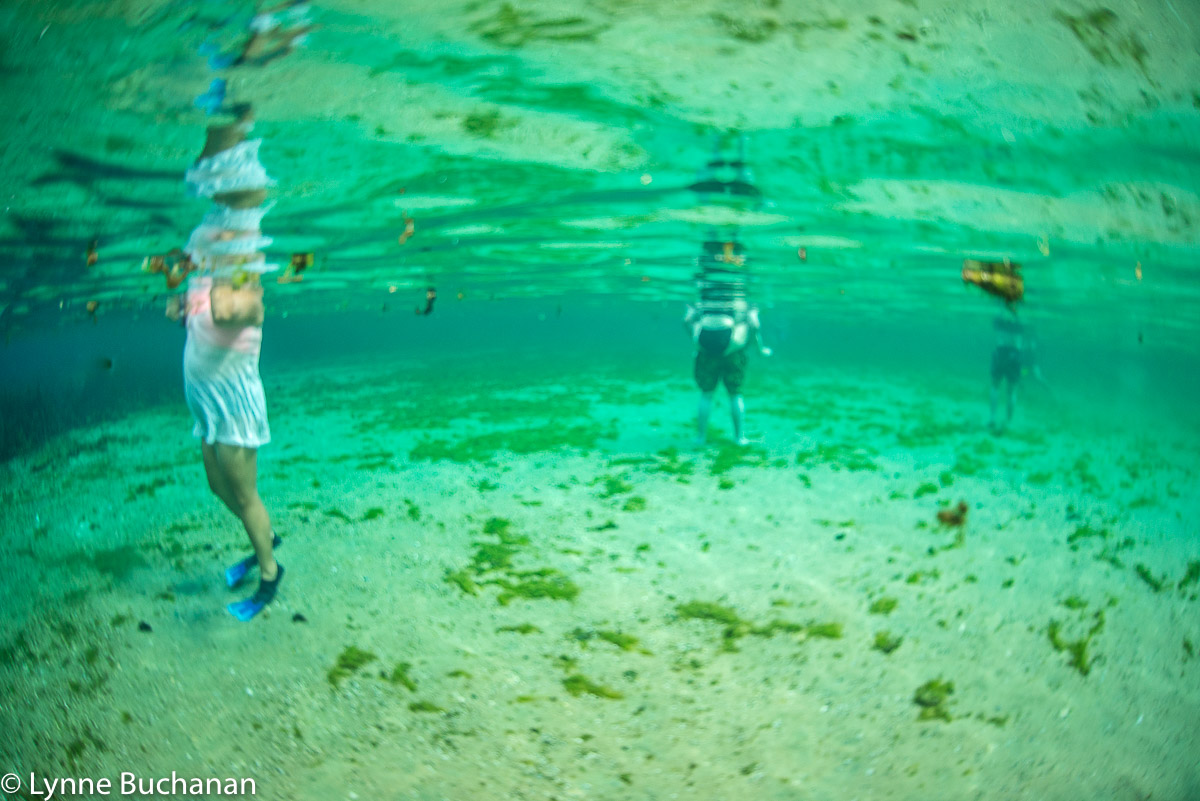LYNNE BUCHANAN
Photographer, Gainesville, Florida
MBA, NYU University; MA Art History, George Washington University, MA in English/Creative Writing, University of South Florida; BA Art History, New College
Buchanan is working on a photographic book about Florida’s waters with George F. Thompson. Robert Kennedy, Jr., Dr. Robert Knight of the Howard T. Odum Springs Institute, and Jason Evans of Stetson University will be contributing essays. This project is the culmination of six years of photographing waterways around Florida from the Keys to Pensacola. In 2016, there was an exhibition of over 40 water images showing diversity and destruction of diversity at the South Florida Museum entitled: “Changing Waters: The Human Impact on Florida’s Aquatic Systems. On View Magazine published a Review of Exhibition.
She also worked extensively with the Waterkeeper Alliance and Waterkeepers in Florida and around the country, published in International Waterkeeper Alliance Magazine.
ARTIST STATEMENT:
Biodiversity is critical to healthy ecosystems and a healthy planet. It also impacts the well being of human beings and our ability to problem solve and be creative. My photographic work focuses on biodiversity in riparian landscapes and along coastlines and in estuaries. My images include both beautiful, healthier ecosystems that are on the brink of being lost and images of areas that have been irreparably damaged from the impacts of climate change, agricultural pollution, population and urban development. In heavily polluted areas, areas with saltwater intrusion, and places where riverbanks or coastlines have been artificially altered by the hand of man, biodiversity is often compromised and ecosystems suffer. Light gets blocked, invasive species run rampant and native vegetation gets squeezed out. When this happens, it often feels we inhabit a foreign landscape; we feel alienated instead of supported by the earth.
To help create a new paradigm of being that replaces dominance with connection, I often make photographs that evoke a genuine appreciation of grace and beauty, especially as it is manifested in the variety of plants and creatures that exist at the intersection of land water. When meandering along a riverbank, I often encounter dead trees covered with colonies of fungi that are alchemically transforming death into life. Watching this metamorphosis, I feel renewed and hopeful. I have also been deeply inspired by my travel to places where man has rarely tread and to see all the biodiversity that exists in Patagonia, the Falklands, or off the beaten track in Iceland. In those places, each step I take may be crushing tiny lichen and miniature plants. Recognizing biodiversity on the surface of this beautiful planet we call home calls us to tread lightly leaving the smallest trace possible so all life can flourish, including our own.
Mushrooms by the Santa Fe River
This image was taken on the Santa Fe River and shows the biodiversity that exists when riparian landscapes are allowed to remain wild. If the intersection of water and land is not subject to dams, seawalls, lawns and other manmade alterations, there is much more biodiversity. This photograph was taken on the Santa Fe River near Rum Island and shows the cypress tress and knees, with a fallen tree covered in mushrooms. The mushrooms are important because they help decompose trees and create organic matter that helps ecosystems survive and flourish. Many believe that mushrooms will save the planet. Numerous creatures, insects, and fungi call dead trees home and they in turn are a food source for other animals. The vegetation along the wild banks also serves to filter pollution and runoff from the developed areas within the floodplain, and when floods do occur the water and nutrients carried by the river are absorbed by the landscape. Landscapes and waterways are healthier when there is more biodiversity.
Floating in an Alien Algae Infested Waterscape, Alexander Springs
Alexander Springs is located in the Ocala National Forest and is the only first magnitude spring in the federal parks and forests system. At the main headsprings, there are sea grasses and white sand. There are also deep cliffs and carved limestone boulders that extend to a depth of about 25 feet. It is one of the most dramatic springs I have seen and swimming in it I definitely felt connected but not domineering. Yet for all its natural beauty, bounded by hardwood and palm forests, pine-wooded hills and a sand beach, the water is filled with lots of algae. Some is merely a thin coating on the sand and rocks below, which is a bit less alarming than encountering large clumps as I did. There were fewer sea grasses and the underwaterscape felt barren and foreign.
Naked Springs Vegetation with Some Algae Intrusion
Naked Springs, Blue Springs, Little Blue, and Johnson Springs in Gilchrist County are among the less impaired springs I have visited in recent years. The park where these springs are located has been privately owned since 1958 and is in a relatively undeveloped area. The levels of nitrates and phosphates are lower than in other springs and there is less algae and invasive vegetation. The surface of the water is not filled with invasive aquatics that block out the light, so there is more variety in the grasses and vegetation and the springs are more colorful from an aesthetic perspective. The biodiversity of native vegetation in turn leads to more turtles, snails, and fish. Manatees are sometimes spotted entering Blue Springs from the Santa Fe River.


